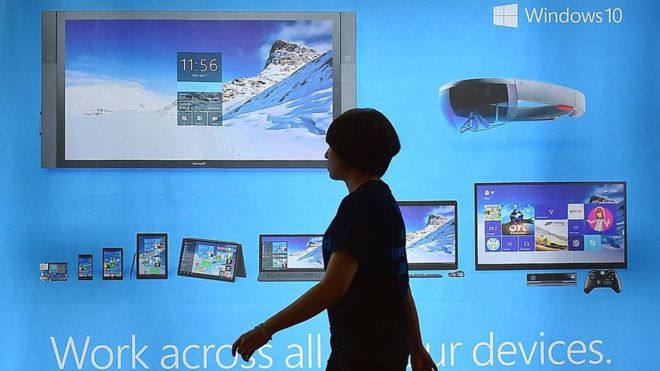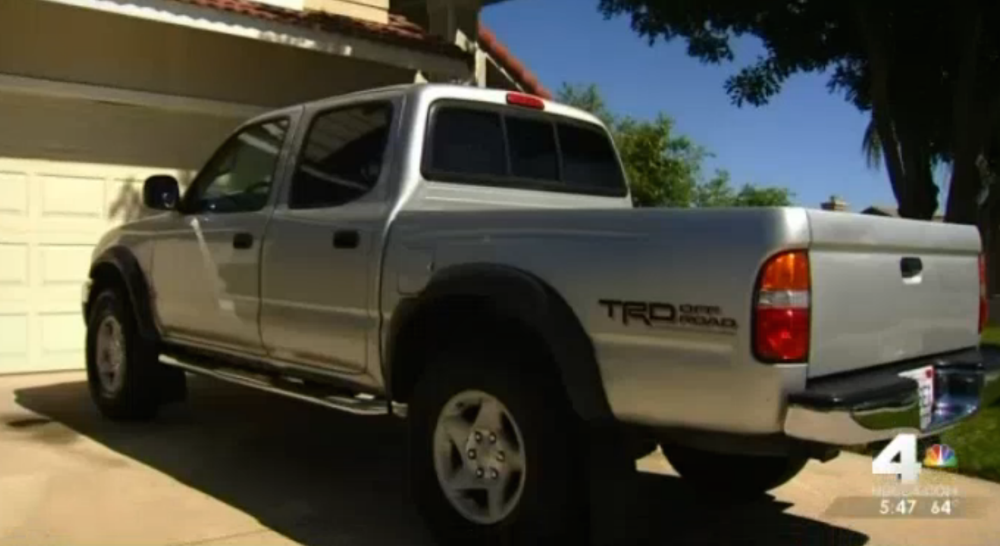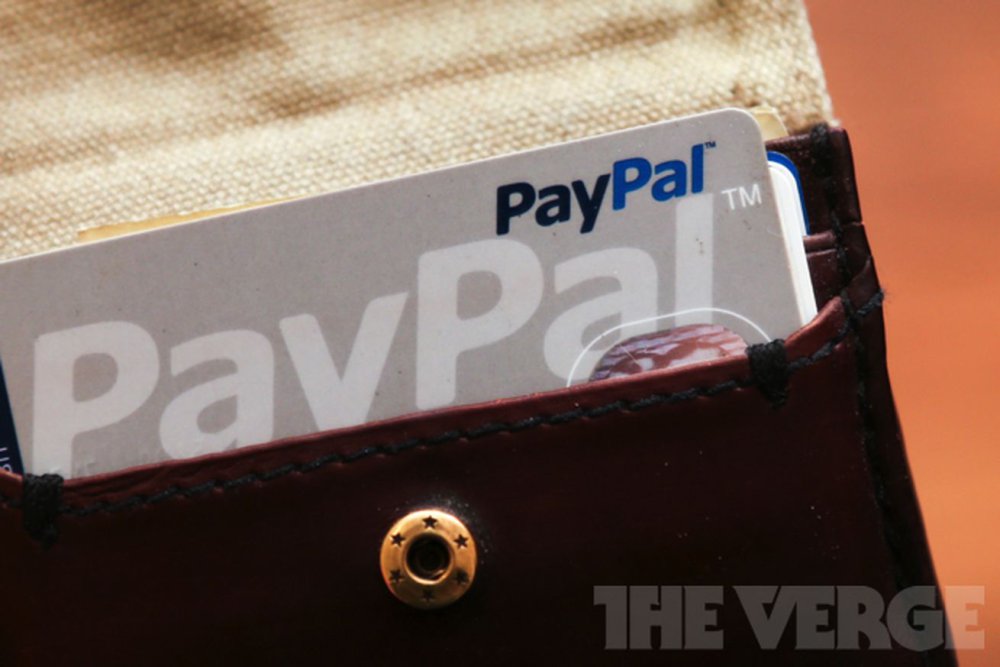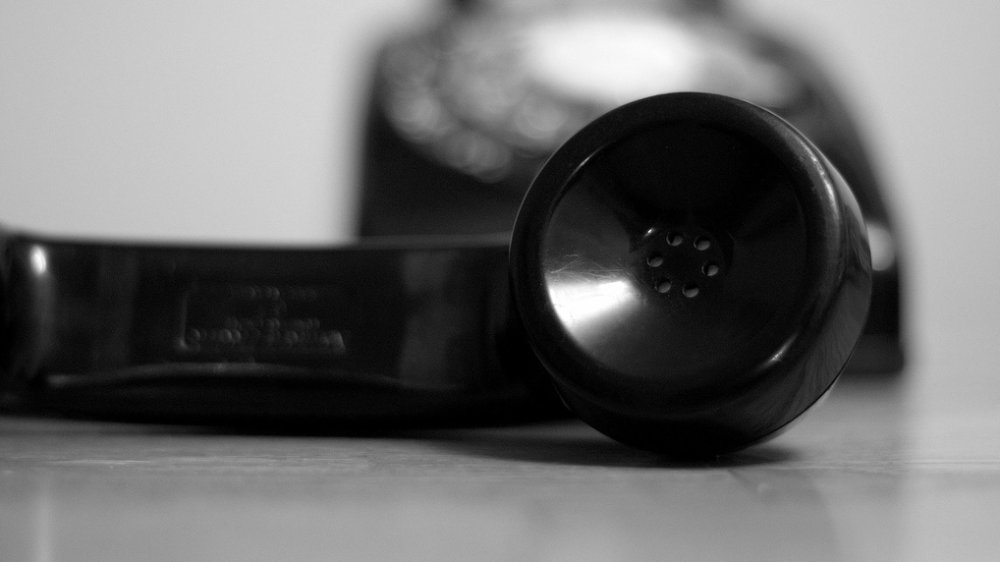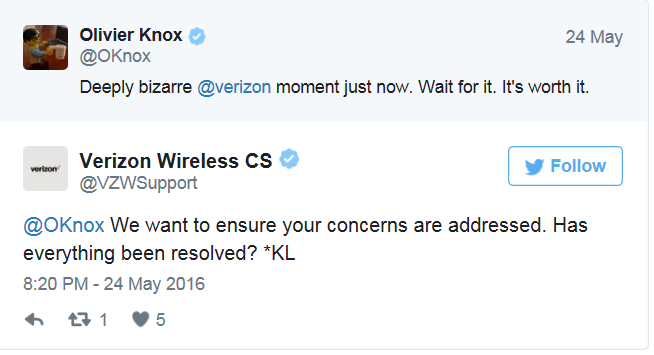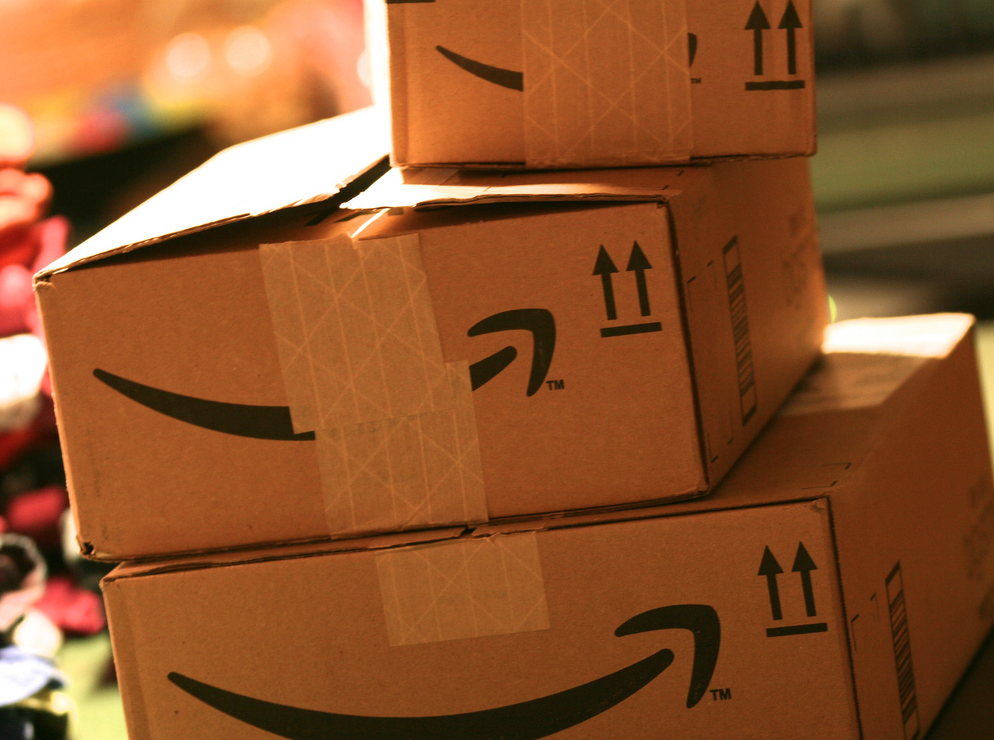-
Posts
7,282 -
Joined
-
Last visited
-
Days Won
2,416
Content Type
Forums
Blogs
Events
Resources
Downloads
Gallery
Store
Everything posted by allheart55 Cindy E
-
Facebook and Microsoft announced today their plans to lay a massive data cable in the middle of the Atlantic Ocean. Construction will begin August 2016 and expected to finish in October 2017. Dubbed "MAREA", Spanish for "tide", the cable will reach over 6,600 kilometers of ocean and will be capable of providing up to 160 terabits per second of bandwidth. It will be the highest capacity subsea cable to ever cross the Atlantic, says Microsoft. The cable will span from Virginia, a major hub for data centers, to Bilbao, Spain. The cable also builds a more efficient path to Africa, the Middle East, and even Asia. Microsoft says MAREA will bring "lower costs and easier equipment upgrades which leads to faster growth in bandwidth rates." Customers can look forward to reduced latency and reliability with Microsoft's cloud services. It makes perfect sense for Microsoft and Facebook to collaborate on such a huge project, as having increased bandwidth will benefit both companies. Microsoft runs its own cloud services like Azure and OneDrive, and Facebook is serving billions of people every day. By building their own internet cable, both companies will speed up their services without the need to work with telecoms. And telecoms should be worried, as Microsoft and Facebook aren't the only tech giants looking to control their own infrastructure. Google is already experimenting with its own fiber internet service and its pay-for-what-you-use mobile internet subscription, Project Fi. It wouldn't be surprising to see Google eventually lay its own transatlantic cable. Telecoms aren't completely out of the picture just yet, as Facebook and Microsoft brought on Telxius to manage and operate MAREA. Most of the bandwidth will be utilized by Facebook and Microsoft, with the rest being sold to other companies. Source: techradar
-
- atlantic ocean
-
(and 3 more)
Tagged with:
-
What do you get when you cross a full-rate ADSL 2/2+ modem, a 4-port switch and a 300 Mbps wireless-N router? A very happy home internet user and a very angry ISP, that's what. We've told you a number of time how internet service providers add bogus modem rental fees to your bill each month, and we explained how to eliminate those fees. All you have to do is purchase your own compatible modem and call up your ISP, then they have to help you set it up. Once that's done, you can return your ISP's old modem and knock anywhere from $96 to $120 off the annual cost of home internet service. Typically when we discuss this important topic, we highlight cable modems that work with popular ISPs like Comcast and Time Warner cable. But what about DSL users? Don't worry, we've got you covered — the Actiontec GT784WN Wireless-N ADSL Modem/Router is on sale from now through the end of the month for just $49.95 with free shipping from Amazon. Here's what you need to know about this modem, which combines a cable modem and a Wi-Fi router into one device: Three products in one: full-rate ADSL 2/2+ modem, 4-port switch, and 300 Mbps wireless-N router Compatible with major DSL service providers, including Qwest, Verizon (excluding FIOS), AT&T (excluding U-verse), and others. Does not work with cable systems such as Comcast, Cablevision, Infinity, Cox, Charter etc. Does not support CenturyLink Preconfigured for simple setup and will auto-detect your specific service settings Rigorously tested to ensure the highest levels of compatibility and performance Includes high-grade firewall, parental controls and a variety of protections and encryptions You can pick up the Actiontec GT784WN Wireless-N ADSL Modem/Router right here on Amazon. Or, if you use cable internet, check out this modem instead. In either case, make sure you check the "other sellers" section in the right-hand column because you'll find lower price options for both models in there. Source: yahootech
-
This is what happened to me but luckily, I was sitting in front of my computer at the time. I quickly selected "reschedule" and then I immediately changed the update settings on my computer to "Never". My husband wasn't so lucky. He fell asleep with his laptop still on and it upgraded to 10 while he was sleeping.
- 2 replies
-
- chinese users
- microsoft
-
(and 2 more)
Tagged with:
-
Yes, I agree. That is a much better price.
-
That's quite a bit higher than T-Mobile but if you are under contract I can see why you would stay with Verizon. I have two lines with T-Mobile with unlimited text and talk and 4 GB's of data. ($97.00 monthly) After the 4 GB's are used up, T- Mobile doesn't charge extra but they do throttle your data upload/download.
-
Microsoft is facing criticism from Chinese users about the way it is trying to persuade people to upgrade to its Windows 10 operating system. Chinese microblog site Weibo said users had now made more than 1.2 million posts complaining about Windows 10. The complaints in China follow criticism from IT experts who said Microsoft was using a "nasty trick" to make people upgrade. Microsoft has not yet responded to the reports about Chinese complaints. Boxing clever "The company has abused its dominant market position and broken the market order for fair play," Zhao Zhanling, a legal adviser for the Internet Society of China told the official Xinhua news agency. He said by forcing the upgrade, Microsoft had not respected the users' right to choose what they install on their computers. This was important, he said, because eventually Microsoft might profit from the "unwanted" upgrades. One Chinese man, Yang Shuo, who works at a Beijing-based PR firm, said the Windows 10 update interrupted him while he was working on a business plan. This meant he had to abandon the document which led to a meeting about a deal worth 3m yuan (£312,000) being cancelled. The outcry on Weibo has led Microsoft to post information on the site to help people revert to older versions of Windows. Earlier this week, Microsoft faced widespread criticism about changes it made to the pop-up box that regularly appears to encourage people using Windows 7 and 8 to upgrade. The box was changed so that closing the pop-up by clicking on the "x" in its top- right corner was taken as permission for the scheduled upgrade to start. Typically, clicking an "x" stops a pop-up taking any further action. The pop-up design change had been described as a "nasty trick" by some commentators. The outcry over the change forced Microsoft to issue an update to give people another chance to cancel the Windows 10 installation. Around 300 million devices have been updated to run the new system, according to figures from Microsoft, who said the free offer to install Windows 10 will end on 26 July. Source: bbc
- 2 replies
-
- chinese users
- microsoft
-
(and 2 more)
Tagged with:
-
-

Recover Windows 10 Product Key From BIOS/EFI?
allheart55 Cindy E replied to mikehende's topic in Tech Help and Discussions
I don't know, Mike. I think that they may mean to download and run WinPE to find a product key. (For an unbootable machine.) TechNet -
Here’s a case where no one really wins. Not the woman whose truck was stolen and had to go out-of-pocket to replace it, and certainly not the guy who bought the truck but had to surrender it after learning it had been stolen five years earlier… and all because someone at the police department filled in the wrong box on some paperwork. NBC Los Angeles has the bizarre saga of the Bakersfield-area woman, who reported her truck stolen back in 2011, when it was still relatively new. Filing that police report should have prevented the vehicle from being resold, but whoever wrote up the paperwork put the truck’s title number in the field where they should have entered its VIN. The mistake was identified by the state’s system and kicked back to the police department, but never fixed. It was only because the original owner got curious, several years later, about whether or not her truck had ever turned up that the truth was eventually revealed. She contacted the police department, only to learn about the paperwork mix-up. “The words out of her mouth were just shocking,” she tells NBC. “The vehicle had never been reported stolen.” If the paperwork had been filed correctly, this whole ordeal would never have happened. Days after the owner had tried to report the stolen truck, another woman — one with a history of car theft — was pulled over by police, but when they ran the VIN on the truck, it didn’t set off any alarm bells. The stolen truck was eventually impounded and subsequently sold at an auto auction, and then again in 2013 to a man who paid $8,000 for it. The owner, having learned of all this, followed the paper trail and looked up the address of the new owner. Plugging his info into Google Maps, she saw her truck right there in the Street View photo in front of his house. Determined to get her car back, she headed over to this house with her old keys. Using her old keychain remote, she was still unable to unlock the truck. That’s when she notified authorities in that city that she’d be getting her stolen truck back. Police gave the current owner the bad news and the rightful owner was able to get into her truck and drive off… in a vehicle that now has more than 100,000 miles on it. The man who bought the vehicle in 2013 says he had absolutely no idea the truck had been stolen. He’s also out all the money he spent to pay for the truck. “My insurance company denied me because they’re saying if it’s a legal seizure then I’m out,” he tells NBC. “This all boils down to a paperwork error and that seems that seems to me like a pretty big mistake.” The truck’s owner, who hasn’t decided whether she’ll sue the police department, says she’s more upset with the cops than she is with the person who originally stole her truck. Source: consumerist
-
The point of a password is to keep your accounts secure. A bad password, though, doesn’t do that very well. And despite decades’ worth of repeated warnings not to use the same terrible passwords, millions of people still regularly do, even when a system tries to require better ones. So Microsoft, in the name of customer protection, has finally had enough and is just going to start banning the really crappy ones altogether. Basically, Microsoft is putting a tool in place for anyone using its login systems that has a check against the worst passwords list and bans new entries from matching them. In the blog post, a Microsoft expert explains that across all their properties (Outlook, Xbox Live, OneDrive, and so on) Microsoft sees hostile attempts made on 10 million accounts per day, so they have a lot of internal data to draw on about bad password habits. The annual list is full of passwords you really shouldn’t be using anyway, with “123456” and “password” routinely taking the top two spots, and such scintillating entries as “qwerty,” “football,” and “12345678” also appearing in the top ten. Microsoft’s system is dynamic, but is still pulling from basically the same pool of bad ideas. The post, targeted to developers, also explains that administrators using Azure AD — a cloud-based identity verification service from Microsoft — will be able to enable the dynamic banning on their own systems in the near future. Source: consumerist
-
-
Exactly. It gave me the creepy-crawlies just looking at it.:eek::D
-
I think that the rodent is grotesque but there are some really unusual builds on the bizarre site.
-

Recover Windows 10 Product Key From BIOS/EFI?
allheart55 Cindy E replied to mikehende's topic in Tech Help and Discussions
Sounds good to me, Mike. -
PayPal is thinning the number of mobile operating systems supported by the company's flagship app down to just two: Android and iOS. The PayPal mobile apps for Windows Phone, BlackBerry, and Amazon's Fire OS will be discontinued as of June 30th. It's fairly common to see these decisions for Windows Phone and BlackBerry, but a little less regular to see a company of PayPal's stature just up and abandon Amazon's fork of Android, which runs on Kindle Fire tablets and the failed Fire Phone. PayPal doesn't offer much of an explanation for the decision, but claims it'll lead to better apps for the remaining platforms. "It was a difficult decision to no longer support the PayPal app on these mobile platforms," said Joanna Lambert, PayPal's VP of consumer product, in an announcement on the company's blog. "But we believe it’s the right thing to ensure we are investing our resources in creating the very best experiences for our customers." PayPal is quick to point out that despite being left without a native app, affected users will still have full access to PayPal's mobile website for account management and money transactions. There are other options, too; BlackBerry users can still send peer-to-peer payments with PayPal through BBM. And on the Windows side, Outlook.com users can enable the PayPal add-in to send payments right from the email app. "We remain committed to partnering with mobile device providers, and we apologize for any inconvenience this may cause our customers," Lambert said. PayPal claims that putting a sharper focus on just the two apps will allow the company to "innovate and make enhancements to PayPal’s mobile experiences to give our customers the best possible ways to manage and move their money." Source: theverge
-

Recover Windows 10 Product Key From BIOS/EFI?
allheart55 Cindy E replied to mikehende's topic in Tech Help and Discussions
I have not tried it but I certainly will in the future. It looks to be an interesting little tool. -
One might think that if a company wants to have a conversation with their customers, once they’ve got them on the phone they’d stay on the line long enough to actually talk to them. But that wasn’t the case for one Consumerist reader, who said a Verizon rep hung up on him when informed that the customer would be recording their call. Consumerist reader Olivier wrote on Twitter about a recent experience he had with a Verizon Wireless representative who called him up — for what reason, we may never know — and told him the conversation they were about to have would (or could be) recorded for quality assurance and/or training purposes. “The breezy @verizon guy then asks me whether I’m ok with being recorded. I tell him I am, because I am also recording the call,” Olivier writes as part of a series of Tweets recounting his experience. “There’s a pause. Then breezy @verizon guy tells me Verizon DOES NOT ALLOW THEIR REPS TO BE RECORDED so he has to hang up.” When he asked the Verizon worker how that could be true, Olivier says he was told that Verizon “does not allow its representatives to be recorded by customers.” It’s true: if Verizon — or any other customer-facing company — doesn’t want customers to record calls, it’s up to them whether or not they want to hang up. But that could leave quite the sour taste in a customer’s mouth. And of course, this not the first time we’ve heard from readers about similar encounters with customer service reps. A Verizon Twitter team member did reply to Olivier’s story with a boilerplate response that shows no evidence an actual human read his Tweets in the first place: We’ve reached out to Verizon to clarify the company’s policy on customers recording phone calls, and will update this post when we hear back. Source: consumerist
-
- conversation
- recording
-
(and 2 more)
Tagged with:
-
-

Any free options to get win10 OS?
allheart55 Cindy E replied to mikehende's topic in Tech Help and Discussions
I don't know that I agree with the must be OEM copy. I haven't run into that problem at all. The only exception to that would be Dell computers. -

Any free options to get win10 OS?
allheart55 Cindy E replied to mikehende's topic in Tech Help and Discussions
Win 7, you usually have a product key located on a MS sticker, available. (Not so with 8, 8.1 or 10.) -
No one likes to pay more for something than they have to. For that reason, several retailers offer pricing guarantees that allow customers to receive refunds if the cost of an item changes within a certain amount of time. Amazon is no longer one of the companies offering this protection. TechCrunch reports that Amazon quietly changed its price protection policy to exclude all products except for televisions. Previously, the company’s policy allowed customers to request a refund if the price of a purchase dropped within seven days. The policy change took effect in early May, but the company continued to honor price-matching requests for a period of time, TechCrunch reports. For example, an email viewed by TechCrunch showed the typical seven-day price-match still occurring on April 28. Days later on May 2, an email from the company described the policy change, stating: “We work hard to find the best prices out there and match them for all customers every day. Our prices do change over time. with the exception of TVs, Amazon.com doesn’t offer post-purchase adjustments.” Under the new policy, Amazon says it will also price-match competitors’ prices for televisions. “Customers who find a lower price on another qualifying retailer’s website within 30 days after your purchase date, let us know and we’ll refund you on an Amazon.com gift card, taking any differences in shipping and promotions into account.” As for Amazon’s own prices on TVs, the retailer says that if it lowers its price within 30 days of purchase, customers can notify the company and obtain a refund. With Amazon’s price-matching a thing of the past, here’s a look at price-protection policies at a number of other retailers. (Click on a store’s name to see the full policy on that retailer’s website): Sort:Retailer ↑ Retailer Walmart Price Protection Policy Price adjustments will be given on prior Walmart purchases within 14 days of purchase with a valid Walmart receipt. A customer must provide the original receipt to receive the adjustment. Refunds are not given on clearance merchandise. Retailer Target Price Protection Policy Price matches are available within 14 days on qualifying items at Target when customers find the identical item for less at Target.com, select online competitors, or in Target’s or competitor’s local print ad. Retailer Best Buy Price Protection Policy Price adjustments are available on select purchases within the return and exchange period of 15 days. Retailer Lowe’s Price Protection Policy Customers who select store pickup or Lowe’s Home Delivery will receive the lower of the online store price or the price at the local Lowe’s store they are shopping at time of purchase. Retailer Home Depot Price Protection Policy Offers a price guarantee on select items and price matching with some competitor products after verification. Retailer Macy’s Price Protection Policy Price adjustments are available for 14 days after purchase. Refunds will be made for the price difference to your original form of payment. Retailer Kohl’s Price Protection Policy Price adjustments can be made within 14 days of purchase. Customers must have original receipts and the item can not be on clearance. Retailer Kmart Price Protection Policy Price adjustments will be given on select prior Kmart in-store purchases that go on sale within seven days of purchase. You must bring in your original sales receipt to receive the adjustment. Amazon kills its price protection policy [TechCrunch]
-
When you think of an identity thief, you probably envision some squirrelly jerk in a third-world country selling your data on the black market. He’s untraceable and living someplace where the police don’t care. However, that ID thief could be only miles away from you, living an otherwise normal life… in a police where police also don’t really care. Today’s Minneapolis Star-Tribune has the first-person account of St. Paul resident Austin, who has spent the last decade dealing with myriad problems caused by a man who lives only a few towns over, but who has been misusing Austin’s Social Security number to buy cars, open lines of credit, and even get health insurance. In fact, he claims that when his employer tried to put him on the company health plan in 2014, the insurer denied him at first — not for any of the usual, byzantine reasons offered up by insurance companies, but because this ID thief was already covered by this insurer. The ID thief has a different name than Austin, but he’s been able to open up multiple lines of credit — at the same bank Austin uses — with Austin’s SSN. As a result, he claims that the bad actions of the ID thief prevented him from purchasing his first home, and eventually resulted in him having to pay more for mortgage insurance, along with the horrible toll it’s all taken on his family and private life. While banks and other companies — 25 in all, according to Austin — have apparently had no problem opening up various new accounts for this other person (dubbed “Frank” in the essay) without alerting the real Austin, they immediately blame him whenever Frank does something wrong. “[H]e’s having an easier time proving he’s me than I am,” writes Austin. “These companies make me jump through more hoops than Frank — for if they did, they would have known he’s not me.” Austin says that he has copies of credit applications signed by this guy using the stolen SSN, that he knows this other man’s name, address, place of employment, phone number, and birthday, yet this stranger “turns out to be as untouchable as a comic book supervillain.” He claims that his attempts to get local law enforcement to care have been fruitless, even when police were presented with a folder containing several years’ worth of evidence and a definitive paper trail. According to Austin, a St. Paul Police Dept. sergeant told him, “The only way we can really do anything is if you capture him on video using your card.” He says he’s hoping this essay will spark some local media attention in his case and help him finally do something about the ID thief who lives only 20 miles from his family. Source: consumerist
- 1 reply
-
- identity thief
- police
-
(and 2 more)
Tagged with:
-

Any free options to get win10 OS?
allheart55 Cindy E replied to mikehende's topic in Tech Help and Discussions
I agree with everything that was said, Mike.



